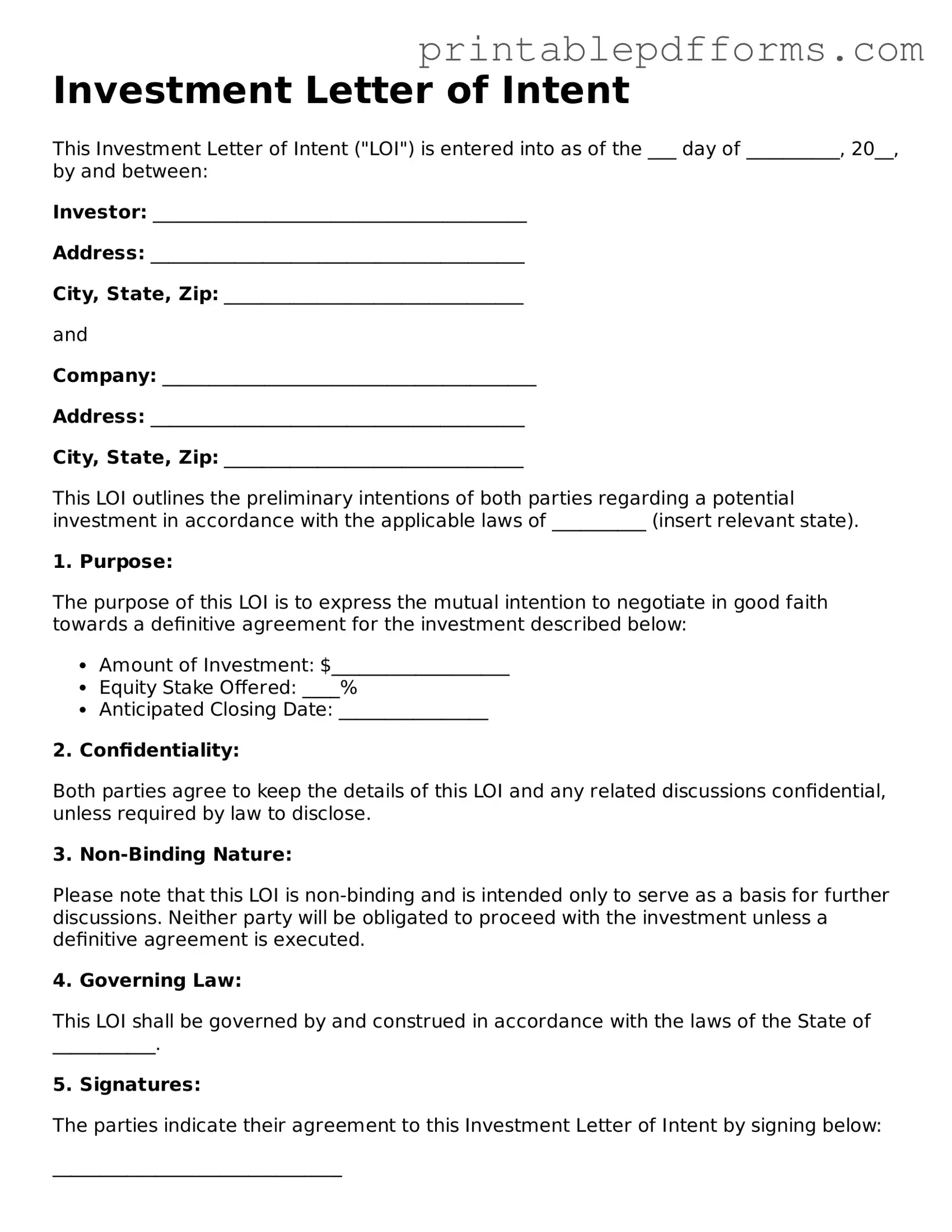Investment Letter of Intent
This Investment Letter of Intent ("LOI") is entered into as of the ___ day of __________, 20__, by and between:
Investor: ________________________________________
Address: ________________________________________
City, State, Zip: ________________________________
and
Company: ________________________________________
Address: ________________________________________
City, State, Zip: ________________________________
This LOI outlines the preliminary intentions of both parties regarding a potential investment in accordance with the applicable laws of __________ (insert relevant state).
1. Purpose:
The purpose of this LOI is to express the mutual intention to negotiate in good faith towards a definitive agreement for the investment described below:
- Amount of Investment: $___________________
- Equity Stake Offered: ____%
- Anticipated Closing Date: ________________
2. Confidentiality:
Both parties agree to keep the details of this LOI and any related discussions confidential, unless required by law to disclose.
3. Non-Binding Nature:
Please note that this LOI is non-binding and is intended only to serve as a basis for further discussions. Neither party will be obligated to proceed with the investment unless a definitive agreement is executed.
4. Governing Law:
This LOI shall be governed by and construed in accordance with the laws of the State of ___________.
5. Signatures:
The parties indicate their agreement to this Investment Letter of Intent by signing below:
_______________________________
Investor Signature
Date: ________________
_______________________________
Company Signature
Date: ________________
